A Touch of Southern Charm
Growing up, Lauren Clement watched her mother, an interior designer, transform people’s homes and lives—taking personal care to ensure that her work reflected the personality and wishes of her clients. Now a designer herself, Clement has found her own passion in decorating, forming the Charlotte, North Carolina-based company Lauren Nicole Designs.
How did your mother’s work as a designer influence you? Is this something that pushed you toward the field?
My mom had been a designer from the time I was two years old. I was brought up in that lifestyle, but I never really thought that it was what I was going to do. I actually went to college for clinical psychology but had a change of heart and decided to make the switch to design. My mom really took charge of my training, and then she helped me start my company when I was twenty-three.
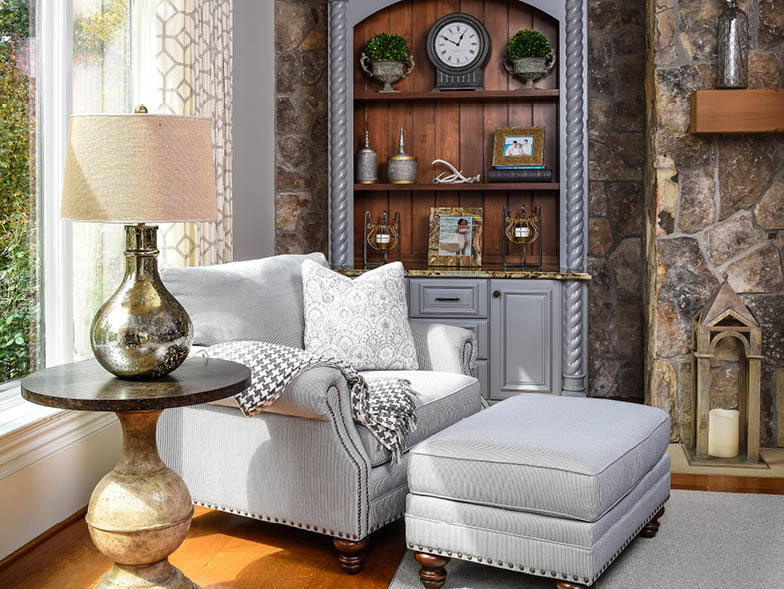
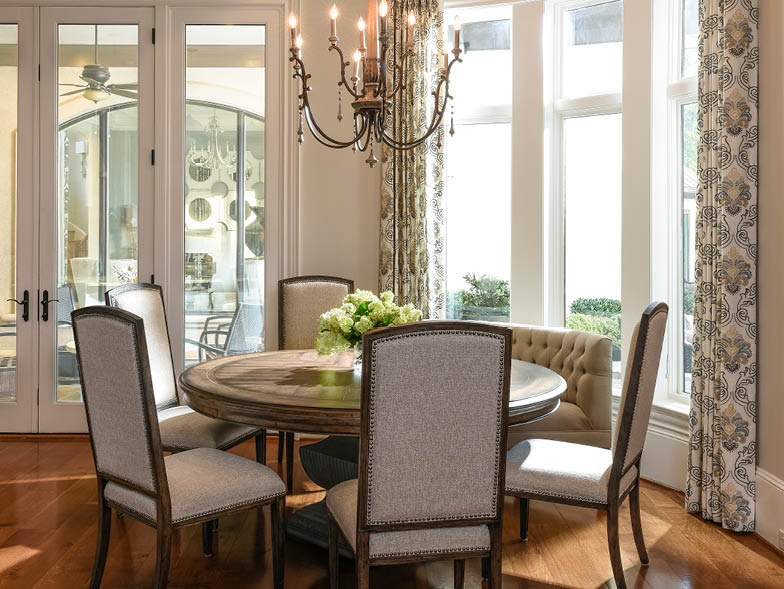
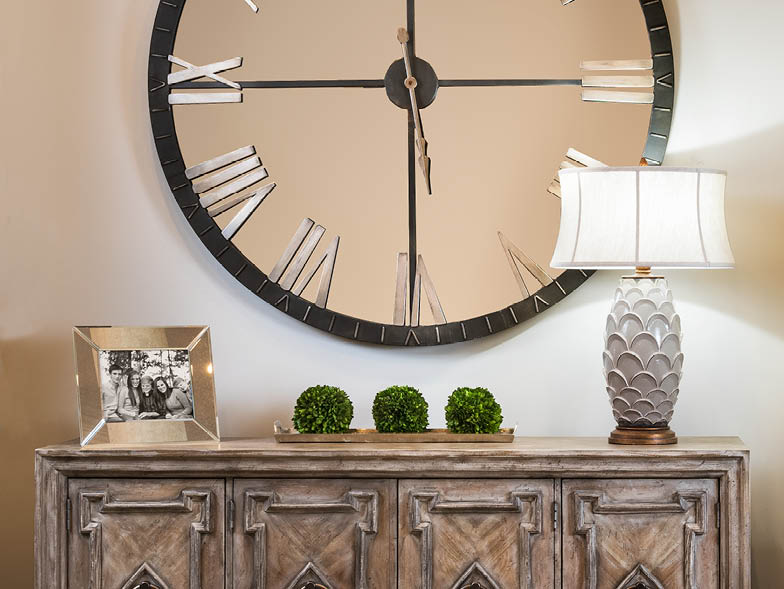
Did growing up in the South play a role in the way you design and your own personal style?
I think you can see a lot of the updated traditional southern style in my work, from where we live in North Carolina and growing up in a home that reflected my mother’s personal tastes—it was always very colorful but well put together. And I think my work lends itself to that type of design.
I also grew up riding horses and being in the outdoors, so that rustic style of wood, varying textures, and incorporating a lot of natural elements are some things you will often see in my work.
What is the first thing you like to do when beginning a new project?
Typically, I do a big walk-through with my clients, and that’s a time for me to get inside of their heads. I like to learn everything—from what they like to wear to what colors they hate. And, with social media, clients now normally come prepared with a look-book or images they’ve seen from other designers that they want to emulate. This first step is really like a fact-finding mission.
Some of the jobs you take on are very large—like the Northshore Estate, for instance. Were the clients looking to redesign their whole home, or did the undertaking grow as time went on?
At the time that the family moved in, the Northshore Estate was not very old. This was a blended family, so the husband and wife were bringing multiple children on both sides. There were a lot of functional needs that needed to be met. But when they worked with the builder, they ended up with a lot of cabinet colors, fixtures, and other elements that were just not “them.” Upon my initial visit, we hadn’t planned to change anything major, but we ended up changing just about everything.
When all was said and done, the wife came home and said, “Lauren, I feel like I can breathe now.” That just made me melt.


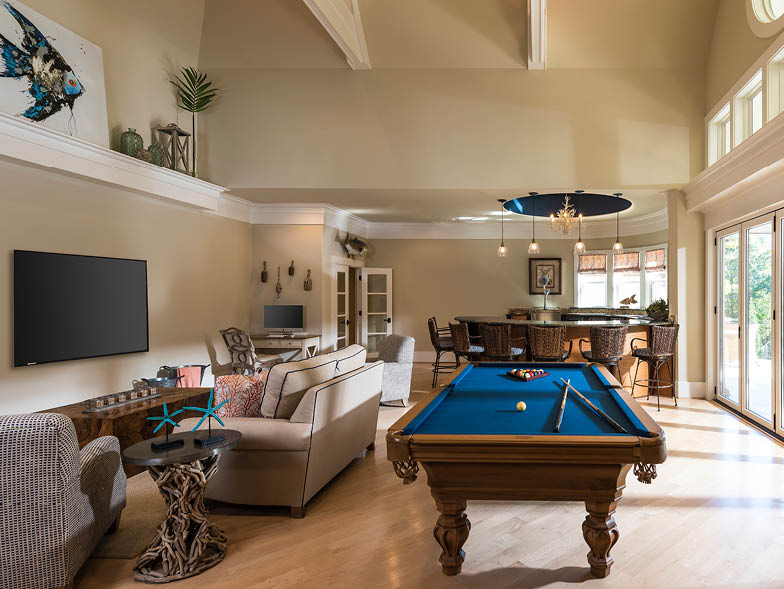
What are some of the big changes that you made to this space that weren’t originally anticipated?
We changed out all of the lighting fixtures and painted every room, including the molding. We refurnished nearly every room and reworked the outdoor area as well. The outside pool area is a very big space, but we broke it up into separate areas, and each section has a purpose.
Speaking of the lighting fixtures in this house, they are very different from room to room, and they’re very ornate. What made you choose such unique pieces?
I decided to bring in all new fixtures, because, to me, lighting is like jewelry. It can make such a huge difference in a space. It not only illuminates and serves a functional purpose but also can add to the overall feeling and style. I like to point out the statistic that 80 percent of homes are 20 percent underlit. When builders install lighting, most of the time it’s too small. I think bigger is often better, in this case. You can go bigger and bolder with lighting. This is always the last element I add to a room, but it’s so important.


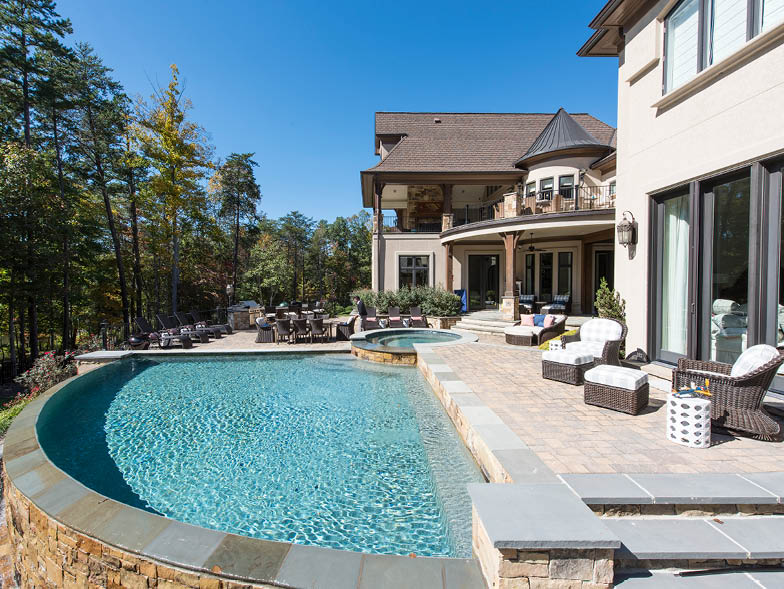
This home has the outdoorsy feel that you mentioned your designs lean toward, but it doesn’t feel overwhelmed by rustic elements. How do you achieve this balance?
The house is situated on a lake, so that indoor/outdoor feel was easy to achieve and definitely something the clients were looking for. The father and sons are big outdoorsmen, so being able to bring a little bit of the outside in was essential.
There seems to be a lot of symmetry from room to room as well—especially in the foyer and family room. What do you like to do to maintain balance in a space without the design looking too monotonous?
In a space that large, it’s important to maintain proportion, like you said, and keep the flow between rooms. But it’s also important for each room to speak for itself and have its own personality. I like to develop a color scheme, and then, playing off of that, maybe include different shades and tones that keep a common thread throughout the space.
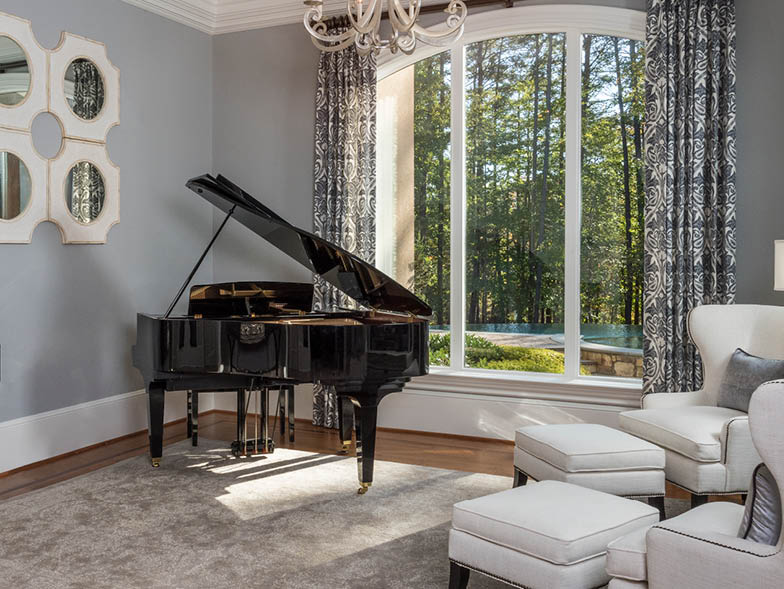
You seem to have a fairly large group of people on your team. How do they supplement the vision that you have for each project?
It truly takes a village. I was about three or four years into my business when I brought on my first employee to help, and that just became a staple position because if I’m not in the office, I’m designing. But sometimes you need to be in both places at once. Now I have help on the design side, too.
Our business is so full of details, and I do have a hand in all of them, but being a mom of two young girls and wanting to be as present in their lives as I can, I would be lost without the support that I have. It’s also great to have help from people who share my vision. I’m respectful of the fact that I’m not the be-all end-all on every decision. It’s so beneficial to have someone’s fresh eyes, and it’s a benefit to my clients as well.
You mentioned that social media has become a big part of the design business in recent years. Has this changed the way you work with clients or the way you think about design?
It’s definitely changing the process a little bit. Instagram and Houzz, for sure, are making people much more knowledgeable about different trends and styles that are out there. It’s also allowing people to branch out a little and try things that they maybe haven’t tried before. That’s great for me because I can provide some examples to them visually. In a business that is as personal as design, social media is able to play a nice supporting role.
For more info, visit www.laurennicoleinc.com.






















